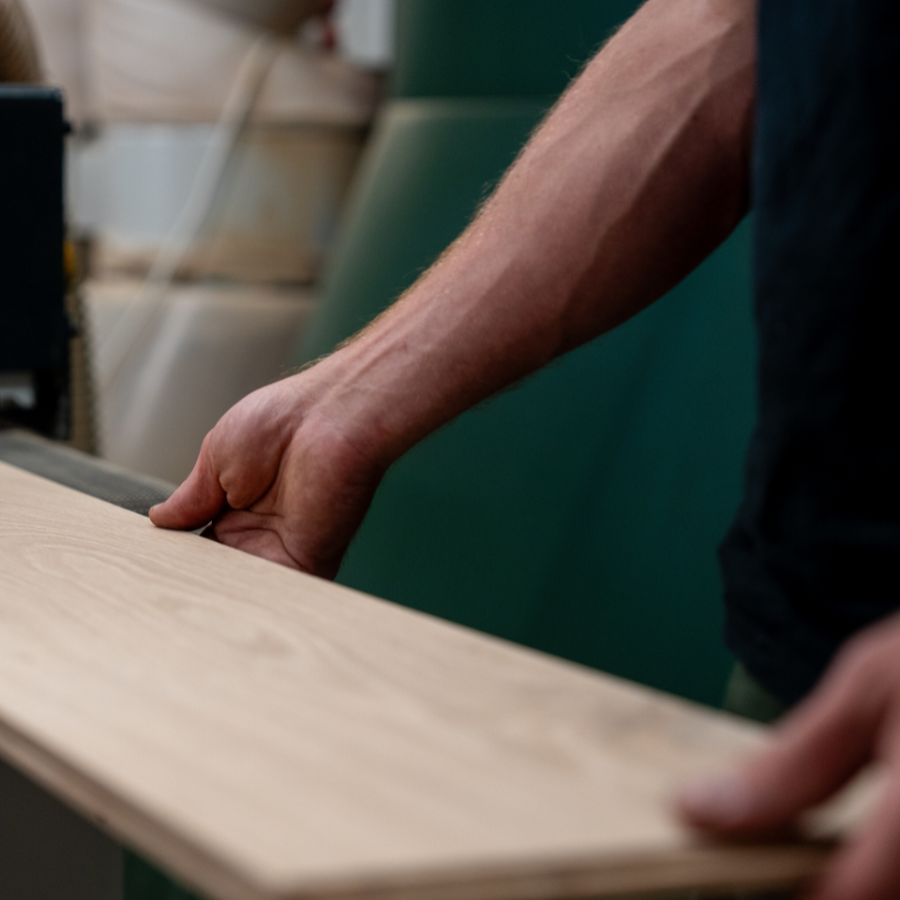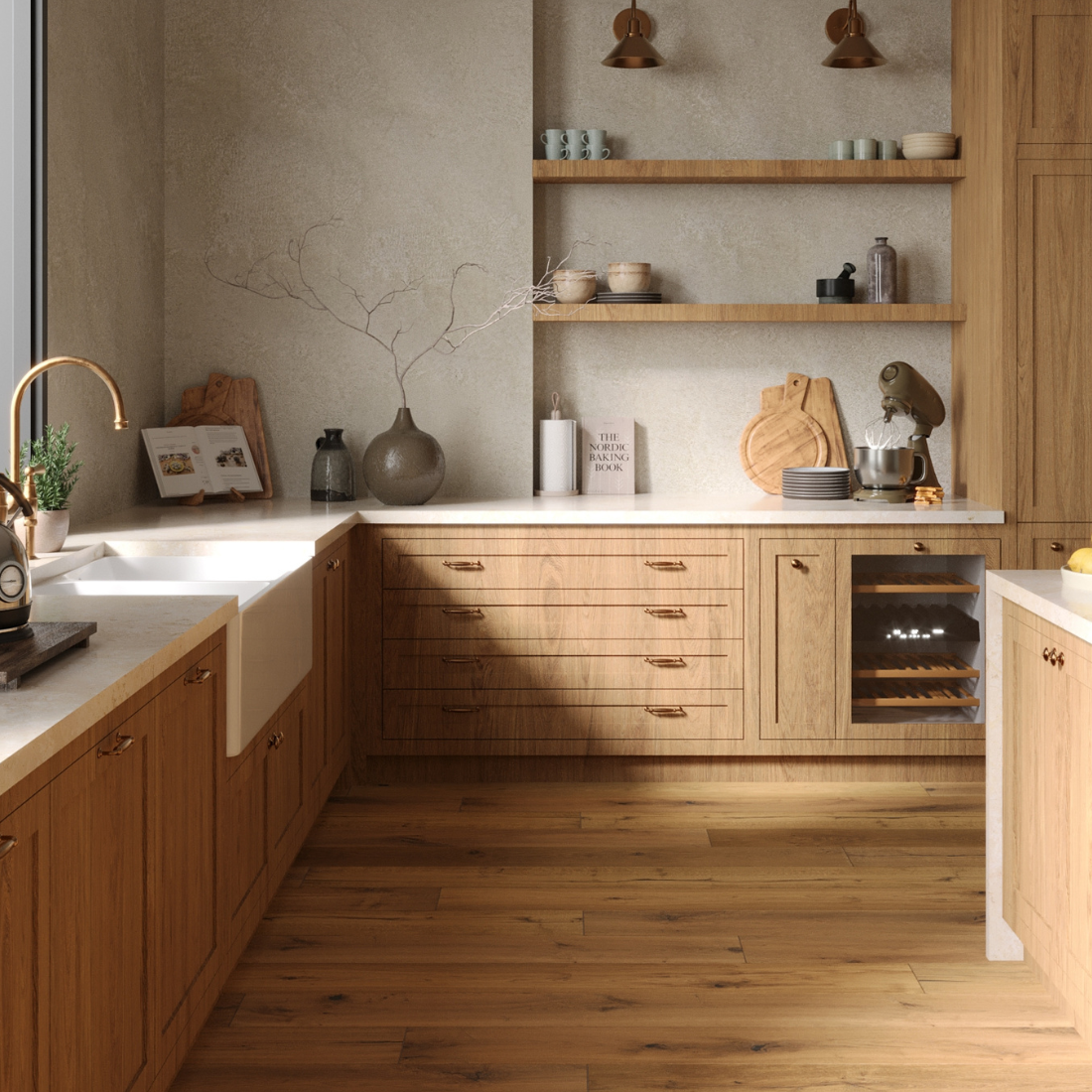What's the difference between oil and lacquer finish?
So, you're ready to invest in beautiful wood flooring – excellent choice! But before you can lay those planks, there's a crucial decision to make: which type of finish should you choose?
At Knot & Grain all of our floors can be finished with either oil or lacquer, and while they both protect your wood, they offer very different aesthetics, durability, and maintenance requirements. Let's dive into the key distinctions to help you make the right choice for your space.
The Look and Feel:
-
Oil Finishes: Think natural beauty amplified. Oil penetrates the wood, enhancing its colour and accentuating its natural grain and texture. This process results in a charming, authentic appearance. The result is a low-sheen, matte finish that feels incredibly tactile and close to the natural wood. Over time, an oiled floor often develops a lovely patina, adding to its charm.
-
Lacquer Finishes: Lacquer, on the other hand, forms a protective layer on top of the wood. This creates a smoother, often glossier surface. Lacquer can offer a more uniform and contemporary look, and it tends to highlight the wood's colour without necessarily emphasising the grain as much as oil.

Image shows The Heritage Plank in colour 'Conker' with an oiled finish
Durability and Protection:
-
Oil Finishes: While oil penetrates and protects from within, it doesn't create a hard, impenetrable surface layer like lacquer. This means oiled floors are generally more susceptible to damages. However they’re much easier to mend if they get scratched or stained. Unlike a lacquered finish, oil can be reapplied as a spot treatment, which will save you having to sand and refinish the entire floor if only a small area needs repairing.
-
Lacquer Finishes: Lacquer's surface layer provides a robust barrier against scratches, scuffs, and spills. This makes it a more durable option, especially in high-traffic areas. However it's worth bearing in mind that lacquer does tend to highlight scratches more than oil. When lacquer is significantly damaged, refinishing usually involves sanding back the entire surface and applying new coats.
Maintenance:
-
Oil Finishes: Oiled floors require more frequent maintenance to keep them looking their best. This typically involves periodic re-oiling (the frequency depends on traffic and wear) to replenish the protective layer. Daily cleaning usually involves sweeping or vacuuming, and occasional cleaning with a specialised cleaning solution designed for oiled floors.
-
Lacquer Finishes: Lacquered floors are generally easier to clean on a daily basis – a quick sweep or damp (never wet!) mop is usually sufficient. While they don't require regular re-application like oil, they will eventually show signs of wear and tear and may need complete refinishing after several years, depending on usage.

Repair:
-
Oil Finishes: As mentioned earlier, spot repairs are a significant advantage of oiled floors. Minor scratches or stains can often be addressed by lightly sanding the affected area and applying a fresh coat of oil. This makes maintenance and keeping the floor looking good long-term more manageable.
-
Lacquer Finishes: Repairing damage to a lacquered floor can be trickier. Scratches may become more noticeable due to the contrast with the surrounding finish. Spot repairs are often difficult to blend seamlessly, and more significant damage usually necessitates sanding and refinishing the entire floor.
Cost:
-
Oil Finishes: The initial cost of an oiled floor can vary, but the ongoing maintenance costs (for specialised cleaning products and re-oiling) should be factored in.
-
Lacquer Finishes: Similar to oil, the initial cost of a lacquered floor can vary. While routine cleaning costs are generally lower, the cost of complete refinishing down the line can be more significant.

The Rustic Plank in colour 'Gravel Path', lacquer finish
Which is Right for You?
Ultimately, the best choice between oil and lacquer depends on your lifestyle, aesthetic preferences, and tolerance for maintenance.
-
Choose Oil if: You love the natural look and feel of wood, appreciate a matte finish, are willing to perform occasional re-oiling, and value the ease of spot repairs.
-
Choose Lacquer if: You prioritise durability and ease of daily cleaning, prefer a smoother or glossier finish, have a busy household with high traffic, and are prepared for more involved refinishing when needed.
Consider your specific needs and weigh the pros and cons of each finish carefully. Our team at Knot & Grain can also provide valuable insights tailored to your particular project. Whichever you choose, a properly finished wood floor will bring beauty and warmth to your home for years to come.
You can select either our oil or lacquer finish on any of our plank product pages when designing your bespoke wood floor. Happy designing!



